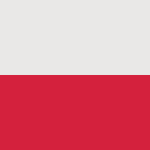Along the suburban railway
The main street
The main street connecting different areas in Gdansk is called Grunwaldzka (referring to the battle of Grunwald in 1410), and in its entire length it runs next to the rail line. The road continues to Sopot, where it’s called Niepodleglosci (Independence Street) and Gdynia, where the name changes to Zwyciestwa (Victory Avenue).
The total length between Gdansk and Gdynia is around 22 km. On one side we find a narrow built-on belt, which later on transfers into a forest area, sometimes several kilometres wide. Behind the forest lies an express road, a ring road taking traffic round the town. On the other side of the main road the area is – with a few exceptions – built-on in a belt towards the sea. -The length from the main road to the sea varies from 7-8 kilometres to just one kilometre at certain stretches. If you follow the main road (or the rail line) you will thus be close to just about everything in Trojmiasto.
The built-up areas and the landscape from the main road varies a lot; monumental German edifices to workers’ dwellings from the beginning of the 20th century interchanges with concrete building blocks, shopping malls, parks and modern apartment blocks, and also huge villa areas. It’s not often you have a chance to find such diversity in such a small area.
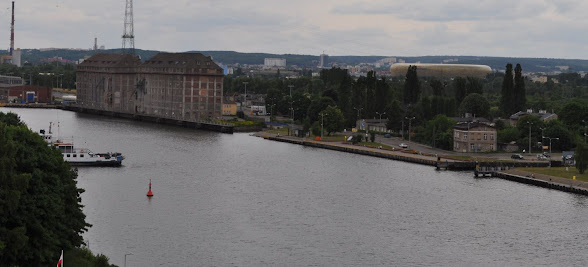
Gdansk – Nowy Port at the entrance to the city
Wrzeszcz
Coming from Gdansk, the road first takes you past Stocznia (the shipyard) where there is a first class view of the giant cranes standing in the area. The next stop is Wrzeszcz, which is a suburb close to the centre, with residential areas and the University of Technology, but taking a look at the shops and the shopping malls it is clear that trade is a dominating factor in Wrzeszcz.
It is a very large part of town, split up into Wrzeszcz Gorny (Upper Wrzeszcz) close to the main road, and Wrzeszcz Dolny (Lower Wrzeszcz), which is situated closer to the coastline. It is a quarter with a mixture of blocks of flats and offices, and with a lot of students attending the nearby University of Technology or the University of Gdansk, which is also very apparent by the number of pubs and clubs for students. Wrzeszcz is centrally situated in relation to the ring road and the airport, and most trains stop at the station. This way the place is ideal if you want to move quickly between different parts of Trojmiasto.
University of Technology
The University of Technology was the first institution of higher education in Gdansk, dating back to 1904 when the town was a part of Germany, and later on it was continued as an educational centre with instruction in German during the time Gdansk was a free city in the years 1921-1939. In 1945, the University of Technology was established as a pure Polish University, and it quickly became the leading institution of higher education in Trojmiasto, among other things because the general university had not been established until 1970. With 2,500 employed and around 10 times as many students, the influence is clear all over the town.

University of Technology
The University has grown quickly and is now spread over a large area, but the original main building from 1904 has survived, and with its turret clock, facade sculptures and building style, the German past is evident, a past which might at times be scaled down by local guides. Just in front of the main building we find a large park and the cutest little houses from the beginning of the 20th century, originally built as dwellings for industrial workers.
Houses for industrial workers
The workers’ houses around the University of Technology were erected around 1900 AD, when industrialisation came massively to selected areas in Poland and the eastern part of Germany. The lack of housing was noticeable, and different building societies came into being – partly financed by the industry itself or by individual philanthropists.
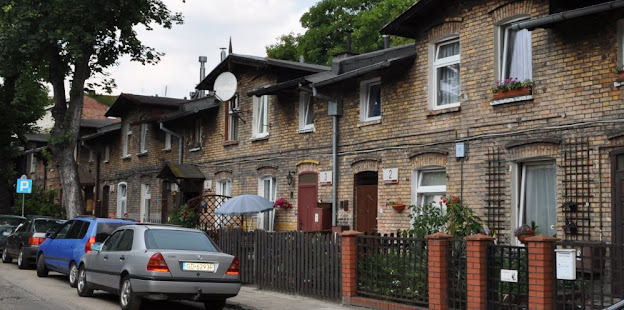
Worker’s dwellings from the beginning of the XX century
Areas with small houses containing a flat with a shared toilet and kitchen quickly turned up in the period after 1900, and along the main road in Gdansk you can still encounter several of these small, beautiful houses, each of which is normally the home of just one family nowadays.
Oliwa
After Wrzeszcz we get into Oliwa, which geographically is one of the largest areas in Trojmiasto, packed with parks, forest and natural scenery. Towards the beach we find the districts of Zaspa and Przymorze, which are well known for their enormous, slightly decayed concrete blocks.
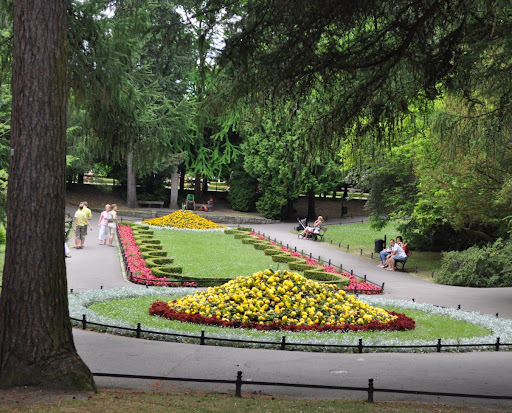
Den berømte park The famous park in Oliwai Oliwa
Oliwa is an old, historical village, which has today grown together with Gdansk and the rest of Trojmiasto. A good deal of the fighting with the Prussians took place here, and in the 16th century it was a popular destination for the Swedish kings and their soldiers. Today the coastline is being modernised, with new up-to-date residential blocks, whereas the area on the other side of the main road keeps its character of being a villa area, often with older houses in need of a caring craftsman. This is also the area where the Nobel laureate, former President Lech Walesa lives in high-tech surroundings in a quiet residential street.
The University
Gdansk got its university relatively late, namely in 1970 by a merger of some minor institutions of higher education in Gdansk and Sopot. For many years the University was spread out around Oliwa, Sopot and Wrzeszcz, but within the last few years a new, modern university complex has sprung up along the main road, and together with the University of Technology it forms a power centre of young, competent people. The numerous companies in the area give a good interaction between work and studies, often a necessity because of the limited level of student grants.

The university in Gdansk, here the university library
Old Oliwa; the Cathedral, park and the Zoo
Old Oliwa is where the historic village of Oliwa used to lie, and apart from the villas you can find here a number of interesting apartment blocks from the beginning of the 20th century. Old Oliwa is dominated by the forest, well-kept parks and a huge zoo which is part of the surrounding wild park.
It is one of the more exclusive areas in Trojmiasto, both the old part, slightly falling into decay, and the areas towards the coastline, where detached houses mix with communist concrete architecture and modern urban living areas. Many of the houses have been transformed into guesthouses giving a great possibility to enjoy the summer holidays at a reasonable price, close to the sea and beaches as well as a city atmosphere.
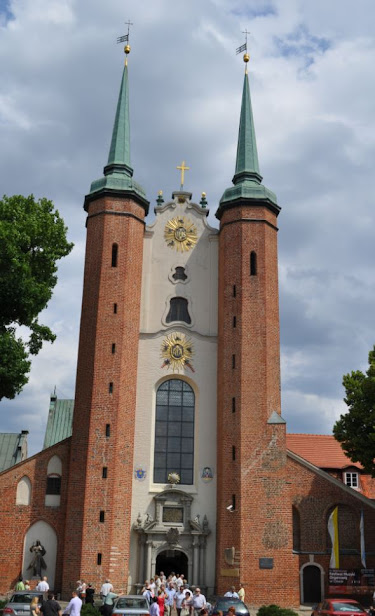
The cathedral in Oliwa
Old Oliwa is well known all over Poland for its park and botanical gardens that goes back to the 14th century. Next to the park lies the gothic cathedral, which was given its present form around 1600 AD. The church is famous for its organ, and all year round organ concerts are held here with open access for anyone interested.
Shopping possibilities – markets and shopping malls
There are many varied possibilities for shopping in Gdansk. Apart from many shops, especially in Wrzeszcz, modern shopping malls have sprung up like mushrooms, and all the different needs the individual family members may have are often satisfied during shopping orgies in those centres. A fair share of the daily shopping is, however, done at the markets, where the prices are sometimes lower and the quality is undoubtedly higher than in the megastores. There are several minor markets spread all over town, e.g. at the old Square in Oliwa, but especially Zielony rynek in Przymorze (close to Oliwa and the beach) is worth a visit. Apart from daily consumption goods traded on the professional market stalls, locals sell their surplus production and second hand goods at temporary flea markets next to the regular market.
Concrete architecture and the high-rise wave blocks
After WWII, the original German population was expelled and many of the Poles originally living in the town had died or been moved somewhere else as a consequence of the war. Both because a part of the Polish population were in the Soviet Union and because of huge destruction during the war, after 1945 many Poles were sent to live in Gdansk, even if they didn’t have any connections to the town.
The harbour and the shipyard were rebuilt as some of the first things; they were seen as strategic investments, with the aim to help rebuild the new Poland. But apart from that, the priority was to provide housing for the many refugees.

Wave-blocks
In Warszawa as well as in Gdansk and other places, huge and impressive plans were made for the new socialist architecture, which was supposed to create palace-like blocks of flats for the population of ordinary workers. With this in mind, the high-rise wave blocks were designed as long, unbroken blocks, which were supposed to solve the acute housing problems for the newcomers.
Housing adapted to economic realities
There was a lot of architectonical enthusiasm in the first years after the war, but already from the beginning of the 1950s, the enthusiasm was replaced with a more realistic approach to economic realities. The designs were placed under the cost-cutting axe, and the result was a lot of concrete buildings, among them the wave blocks – long blocks with a wavy form referring to the sea, at the same time breaking with the square lines which normally characterised this kind of construction. The monumental part of the constructions was however put aside because of the cost, and today we find them all over the near-shore area – unbroken blocks, sometimes reaching almost a kilometre, looking slightly sad and decayed. The original idea for them was however interesting, and it is worth taking a walk in the area looking at the results as they look now around 50 years later.
Nowy Port and Westerplatte
Nowy Port – literately translated into ‘New Port’ – is found at the mouth of the channel leading to the centre of Gdansk. It is an area with a very special character and architecture, somehow separated from the rest of the town, and with a population living its own way – in other words, a typical port district.
The port itself is from 1772, but much earlier there was a light and a fortification at this place, efficiently protecting the town of Gdansk from attacks from the channel side. The best way to get to Nowy Port is by bike along the bicycle path or by tram from Gdansk.
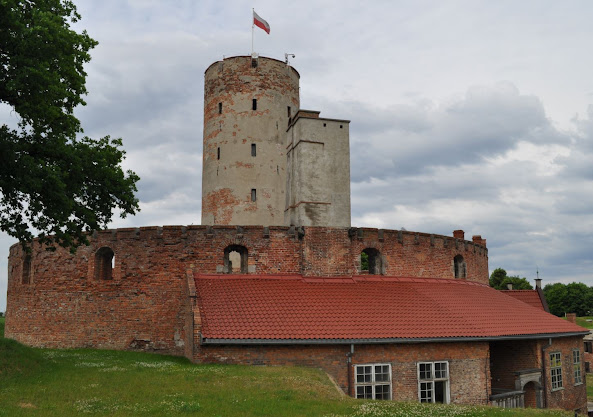
The old fortification protecting Gdansk against attacks from the sea side for centuries
Apart from a small number of concrete buildings there are a lot of mainly German pre-war blocks of flats, with ornamentations, balconies and a style that does not actually fit the impression of Nowy Port as a working class area. Within the past few years, the district has also changed its image towards something a bit more sophisticated, and you will now find several excellent cafes and creative restaurants with a clear level of ambition. In front of the harbour lies the old fort protecting the town – Twierdza Wisloujscie, a beautiful fortification where you can be taken around in Polish, English or German, at the same time having an excellent view over the town.
From the harbour (and from the fort) you may also take a look at Westerplatte– a symbolic place, known as the place where WWII broke out in September 1939. Though Gdansk in the interwar period was an independent free town, Poland was allowed to keep a coastal defence at Westerplatte, and it was these units that the German armoured vessel, Schleswig-Holstein, attacked as a prelude to the coming world war.
It is possible to take a channel tour to Westerplatte from the centre of Gdansk, but it is also worth taking a cab or a tram to the area and spend some time walking around and inhaling the atmosphere.
A walk along the sea front
The beach promenade in Gdansk gives a terrific open-air experience, with an excellent bicycle route, footpath and park on one side a good part of the way and a beach on the other side. Frequent small paths lead to the beach and along the route you can find a huge number of bars, restaurants, ice-cream stalls, hotels, pensions and bicycle repair workshops.
The best thing about the beach promenade in Gdansk is that it seems real. The tourists are gathered in the far posher town of Sopot, which means that in Gdansk you won’t really find that busy air that you may at times find in tourist destinations. The local people walk, bike and chat with each other while eating ice cream, which may be bought at local prices.
Obviously here we also find oases attracting people from the surrounding areas, and the closer we get to Sopot, the more of these places. Around Oliwa we find camping sites, loads of booths with fried fish and dancing places for the grown-ups.
The pier at Przymorze
One of the places in Gdansk giving Sopot some competition is the pier at Przymorze. It lies at a biking distance of around 7-8 kilometres from Sopot, and has been built together with a small leisure centre close to some of the concrete blocks. The pier is not as long as its more well-known counterpart in Sopot, and it doesn’t have a marina; on the other hand the atmosphere is more relaxed, without the pressure of having to experience something, which you may feel at the more posh places.
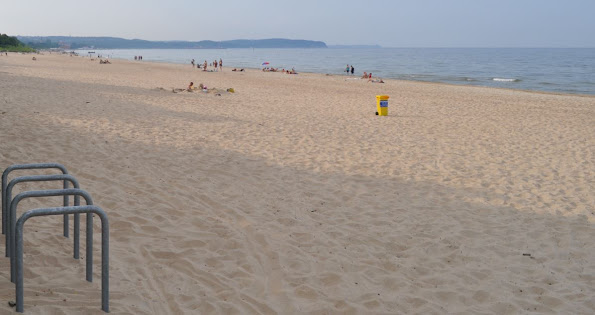
The beach
There is a beach along the entire length of the promenade, a wide and lovely sand beach, which is only overcrowded on the hottest summer days. Here and there you find beach restaurants where you can have a deck chair for free or for a modest fee, but in general you just bring your own towel and enjoy the bay with its passing ships without having to pay for it. If you walk along the beach you will find play areas for children, showers and other necessities, but the beach is much less commercialized than you might expect close to a holiday centre. It’s a great place if you just want to be close to nature.
Please send an email to m@hardenfelt.pl if you would like an English-speaking tour guide to show you the most important places in Warsaw.
